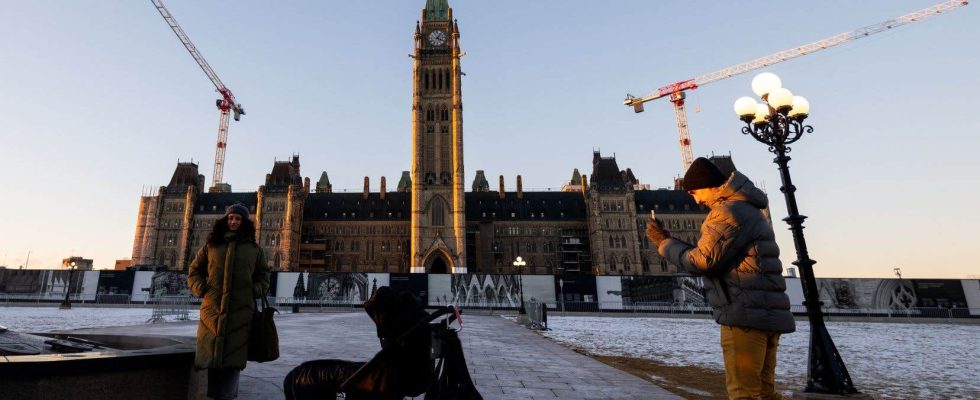Most parts of Canada likely won’t have a white Christmas this year, according to the senior climatologist at Environment and Climate Change Canada.
“If you don’t have snow now, you won’t have snow,” David Phillips said. He said that in many areas that traditionally celebrate a white Christmas, there will be no snow.
The technical definition of a “white Christmas” is two centimeters of snow that sticks, Phillips said.
“This is the Canadian standard. Millions of Canadians will not have one. »
In Montreal, the slopes for sliding at the foot of Mount Royal are closed, and the skating rinks too due to heavy rain and mild temperatures.
Calgary’s few patches of snow await their fate as forecasts call for temperatures well above freezing and warm Chinook-like winds. In Ottawa, where heavy snowfalls are common, lawns are covered in an icy powder that doesn’t allow for sledding or snowballing, but which at least shines nicely in the sun.
After two consecutive White Christmases, Vancouver is almost certain to end its streak this year.
Cypress Mountain ski resort, north of Vancouver, said on social media platform Friday and sunny weather expected throughout the weekend before the return of rain expected on Christmas Day.
It’s the same everywhere you look.
From Prince Rupert, British Columbia, to Corner Brook, Newfoundland and Labrador, and from Inuvik in the Northwest Territories to Iqaluit, Nunavut, snowfall accumulations in late November were between 10 and 15 centimeters below average. Some places, like southeastern British Columbia, are 50 centimeters lower than average.
This means that southern Canada is almost devoid of any appreciable snowpack.
Environment Canada’s snow map uses brown dots to indicate snow-free resorts and is brown from coast to coast. Edmonton, Saskatoon, Winnipeg, Toronto, Montreal, Halifax – all brown dots.
Skiers keep their skis in the closet
Online ski information indicates that 41 resorts across the country have opened an average of only a third of their slopes.
If you want snow, you have three choices: coastal Newfoundland along St. John’s, Quebec’s Saguenay region, and a small pocket of the Rockies in southwest Alberta. All of them are 15 to 20 centimeters taller than average – not epic, but enough to roll a snowman or roll down a hill.
“The snow didn’t have a chance to accumulate,” Phillips said.
“It’s just too hot and too dry. We’ve been setting all kinds of records for warm temperatures and that’s been the case all summer and certainly into October and November. »
Mr Phillips is already worried about the effects of dry weather on next year’s crops and forests.
“Humidity is a big concern in the Prairies,” he said.
“Last year’s wildfires started because of winter conditions. This does not look good at a time when we should be recharging soil moisture. »
Almost the entire country is classified as “abnormally dry”, indicates Environment Canada’s Drought Monitoring Tool. Some places in southern Alberta are already at the “exceptional” level, which is at the top of the classification system.
Parts of British Columbia continue to experience extreme drought conditions, with the Peace River and Fort Nelson areas classified as Level 5 – the highest level of drought activity with “almost certain negative impacts”, depending on the province.
El Niño – a periodic weather system that brings warm weather to much of North America – is partly to blame for this abnormal weather. This year, the system started early and strong, Phillips said. Additionally, Arctic air descending toward southern latitudes has not been as cold as usual.
All of this is taking place in a changing climate that has made 2023 the hottest summer in the planet’s history.
“El Niño is different now,” Phillips said. This is happening against the backdrop of a warming world. »
With information from Chuck Chiang
